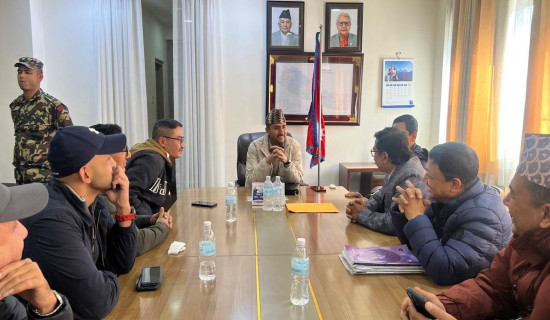- Sunday, 30 November 2025
Only 27% people have access to pure drinking water
By Pragati Dhakal, Kathmandu, March 23: It is found that only 27 per cent of the total population of the country has access to pure drinking water, according to the Ministry of Water Supply and Sanitation.
73 per cent of the population is deprived of this facility due to a lack of minerals including iron in water sources owing to the dilapidated water pipeline and water tank of more than 100 years.
Sources of drinking water become more polluted during times of natural disasters like landslides and floods which affects people's health. According to doctors, drinking unfiltered and untreated water due to a lack of public awareness has a serious impact on public health.
Undersecretary at the Ministry, Madhu Timalsena, said the ministry was working to increase people's access to pure drinking water.
The problem has surfaced in the distribution of clean drinking water as water sources have become polluted due to the distribution of water from pipelines installed some 120 years ago, he shared.
Timalsena, however, urged people in Kathmandu to drink water supplied by the Melamchi drinking water project without any doubt as it is in accordance with the standards of the World Health Organisation.
He suggested drinking underground water only after testing it as the iron content in the underground water is generally high.
People can suffer from different diseases and infections like diarrhoea, vomiting, jaundice, typhoid and cholera as well as the high risk of hepatitis 'A' and 'E' due to consumption of polluted drinking water, shared doctors.
Similarly, infectious disease Specialist Dr Sher Bahadur Pun suggested one and all to drink water only after purifying or boiling it, stating that serious problems might arise in public health due to consumption of contaminated water.
"Back 20 years ago, people used to die suffering from cholera due to drinking polluted water. People are losing their lives due to consumption of polluted water even these days," he said, referring to the lack of access to pure drinking water.
According to Dr Pun, water is more polluted after monsoon-induced disasters like floods and landslides, and drinking the polluted water will cause water-borne communicable diseases as cholera, diarrhoea, hepatitis, dysentery and others.
Public health expert Dr Sameer Adhikari warned against using contaminated water in view of the public health. He suggested keeping the water sources clean and drinking boiled water and using clean water to wash fruits and vegetables.
Rajendra Aryal, the President of the Federation of Drinking Water and Sanitation Users Nepal, said the constitution has made provision that all citizens have the right to potable drinking water as their fundamental right. However, he complained that this fundamental right was not implemented in an effective manner.
Aryal called on the government to give priority, in the budget for the upcoming fiscal year 2024/25, to programmes related to access to quality drinking water for all. "Still many consumers have to line up for hours to collect water, and on top of this, they do not have access to pure water. Programmes for distributing clean drinking water should be moved ahead through collaboration among all the three tiers of the government," he emphasized.
As per the National Census Report, 2021, 34.6 per cent of the total 6 million 660 thousand and 841 households use taps/pipe water within the premises of their homes while 22.4 per cent used taps/pipe water outside of the premises of their homes and 29.8 per cent used water from tube well/hand pump.
Similarly, the Report states that 1.5 per cent of the total 6 million 660 thousand and 841 households used water drawn from covered wells, 3.9 per cent used water from spring taps and 4.6 per cent used jar and bottled water.
It is stated in the report that 2.1 per cent of the total 6 million 660 thousand and 841 households use open well water as their main source of water while 0.4 per cent use water directly collected from rivers and streams.
In this context, the government has also adopted the Global Sustainable Development Goal 6 to ensure the availability and sustainability management of water and sanitation for all.
By 2030, the government aims to increase the number of people using safe drinking water to at least 90%. Similarly, UNICEF's new country programme (2018-2022) in Nepal initiated efforts in WASH programmes to secure enhanced and equitable access to safe and sustainable drinking water, sanitation services, and improved hygiene practices for children and their families.
This programme is guided by the WASH Sector Development Plan (2016 - 2030). It supports improving water quality through strengthening the water regulatory body, implementing water safety plans, and raising community awareness on household-level water treatment. (RSS)

.jpg)

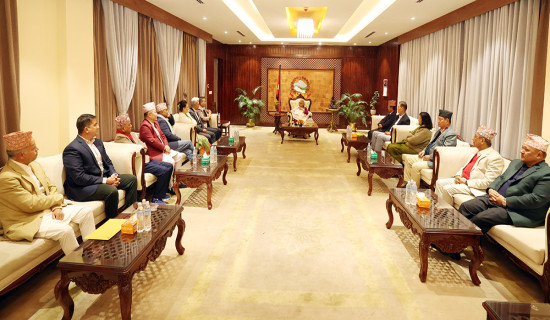

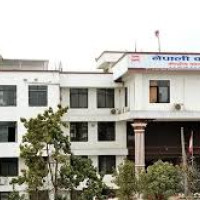
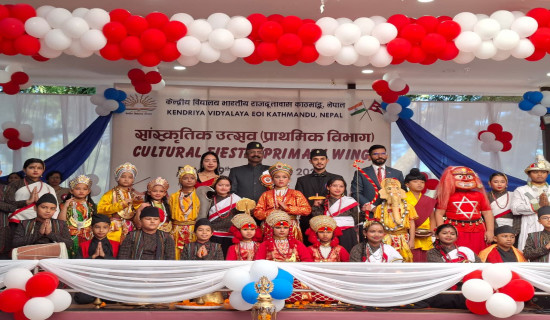

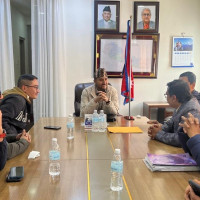
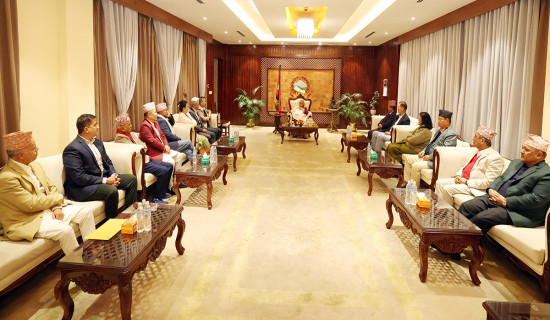
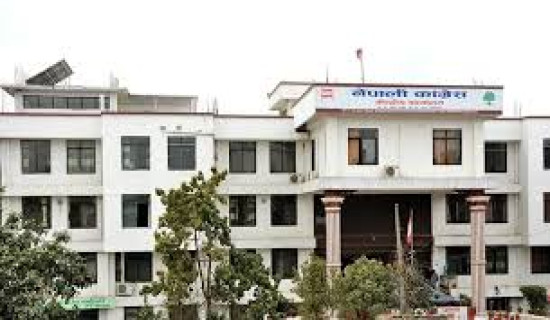

-original-thumb.jpg)

